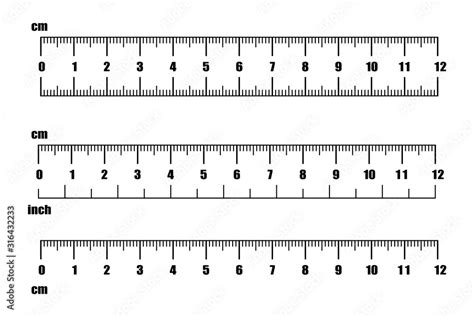How Many Inches Is 13.5 Cm
Kalali
Mar 28, 2025 · 4 min read

Table of Contents
How Many Inches is 13.5 cm? A Comprehensive Guide to Metric-Imperial Conversions
The question, "How many inches is 13.5 cm?" might seem simple, but it opens the door to a wider understanding of unit conversion, particularly between the metric and imperial systems. This comprehensive guide will not only answer that question directly but also explore the underlying principles, provide practical applications, and offer tips for accurate conversions in various contexts.
Understanding the Metric and Imperial Systems
Before diving into the specifics of converting 13.5 centimeters to inches, let's briefly review the two systems involved:
-
Metric System (International System of Units or SI): This system, based on powers of 10, is used globally for scientific measurements and increasingly in everyday life. Key units include meters (length), grams (mass), and liters (volume). Its simplicity and ease of conversion make it highly efficient.
-
Imperial System (or US Customary Units): Primarily used in the United States, this system uses units like inches, feet, yards, miles (for length), ounces, pounds (for weight), and gallons (for volume). Its origins are historical, leading to a less intuitive system with complex conversion factors.
The Conversion Factor: Centimeters to Inches
The fundamental conversion factor between centimeters and inches is approximately 2.54 centimeters per inch. This means that one inch is equal to 2.54 centimeters. This factor is crucial for all conversions between these two units.
Calculating 13.5 cm to Inches
To determine how many inches are in 13.5 centimeters, we simply apply the conversion factor:
- Divide centimeters by the conversion factor: 13.5 cm / 2.54 cm/inch ≈ 5.31 inches
Therefore, 13.5 centimeters is approximately equal to 5.31 inches.
Precision and Rounding
The result above is rounded to two decimal places. The actual value is slightly longer. The level of precision needed depends on the application. For casual measurements, rounding to two decimal places is usually sufficient. However, in scientific or engineering contexts, greater precision might be required.
Practical Applications of Centimeter-to-Inch Conversions
The ability to convert between centimeters and inches is incredibly useful in various situations:
-
Sewing and Crafting: Many patterns and instructions might use either centimeters or inches. Accurate conversions are essential for creating garments or projects that fit correctly.
-
Construction and DIY: When working with building materials, understanding both systems is crucial for accurate measurements and avoiding errors.
-
Cooking and Baking: Some recipes might use metric measurements, while others might use imperial ones. Converting between the two ensures consistent results.
-
Travel: Navigating maps or understanding distances in different countries might require switching between units.
-
Science and Engineering: Precise conversions are vital for accurate calculations and ensuring compatibility across different systems.
-
Healthcare: Medical measurements often require conversions between metric and imperial systems, ensuring the accuracy of diagnoses and treatments.
Beyond the Basic Conversion: Working with Other Units
Understanding the centimeter-to-inch conversion allows you to easily work with other units within the metric and imperial systems. For example:
-
Converting millimeters to inches: Since 1 centimeter equals 10 millimeters, you can first convert millimeters to centimeters and then to inches.
-
Converting inches to feet or yards: Once you have the inches equivalent, you can easily convert to larger imperial units using the standard relationships (12 inches per foot, 3 feet per yard).
-
Converting meters to inches: Similarly, converting meters to centimeters first, and then to inches, provides a straightforward approach.
Online Conversion Tools and Calculators
While understanding the underlying principles is crucial, many online conversion tools and calculators are available for quick and easy conversions. These tools can be useful for verifying your calculations or for handling more complex conversions involving multiple units. However, it's always advisable to double-check the results, especially when precision is critical.
Avoiding Common Mistakes in Conversions
-
Incorrect Conversion Factor: Using the wrong conversion factor is the most frequent mistake. Always double-check to ensure you are using 2.54 cm/inch.
-
Unit Mismatch: Make sure you are consistent in your units throughout the calculation. Mixing centimeters and millimeters, for example, will lead to inaccuracies.
-
Rounding Errors: Be mindful of rounding errors, especially when performing multiple conversions. Try to keep as much precision as possible during intermediate steps.
-
Using an inappropriate conversion tool: While online calculators are helpful, always understand the method to verify your result and avoid potential errors.
Conclusion:
Understanding how to convert 13.5 cm to inches—and more generally, how to convert between the metric and imperial systems—is a fundamental skill with practical applications across many fields. By mastering the conversion factor and understanding the principles involved, you'll be able to confidently and accurately convert units, ensuring precision in your measurements and calculations. Remember to always double-check your work and choose the appropriate level of precision depending on the context of your conversion. This knowledge empowers you to navigate a world that uses both systems efficiently and effectively.
Latest Posts
Latest Posts
-
Cuanto Es Un Acre En Pies
Mar 31, 2025
-
What Is The Least Common Multiple Of 7 And 9
Mar 31, 2025
-
12 Is What Percent Of 60
Mar 31, 2025
-
Compare And Contrast The Two Types Of Fermentation
Mar 31, 2025
-
How Much Is 120 Ounces Of Water
Mar 31, 2025
Related Post
Thank you for visiting our website which covers about How Many Inches Is 13.5 Cm . We hope the information provided has been useful to you. Feel free to contact us if you have any questions or need further assistance. See you next time and don't miss to bookmark.
